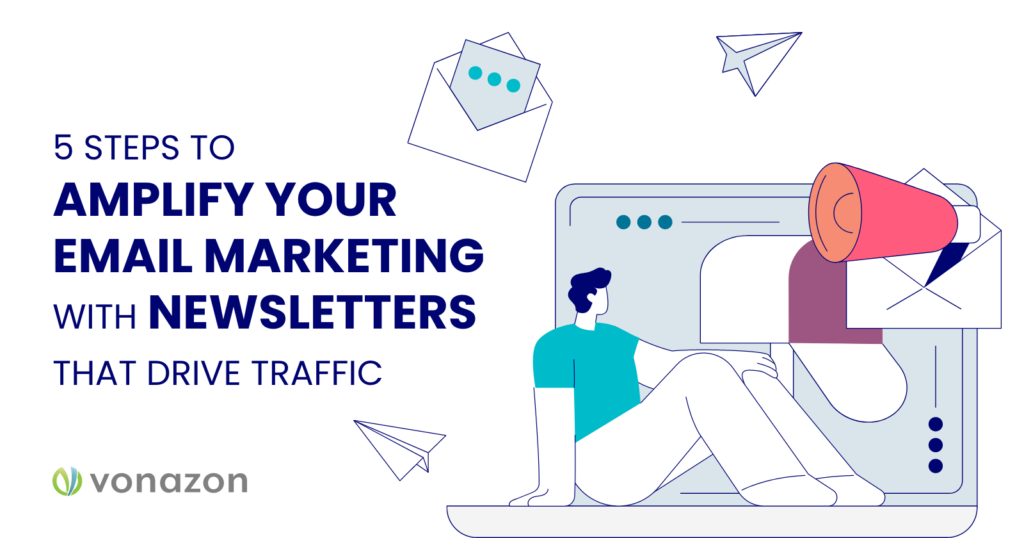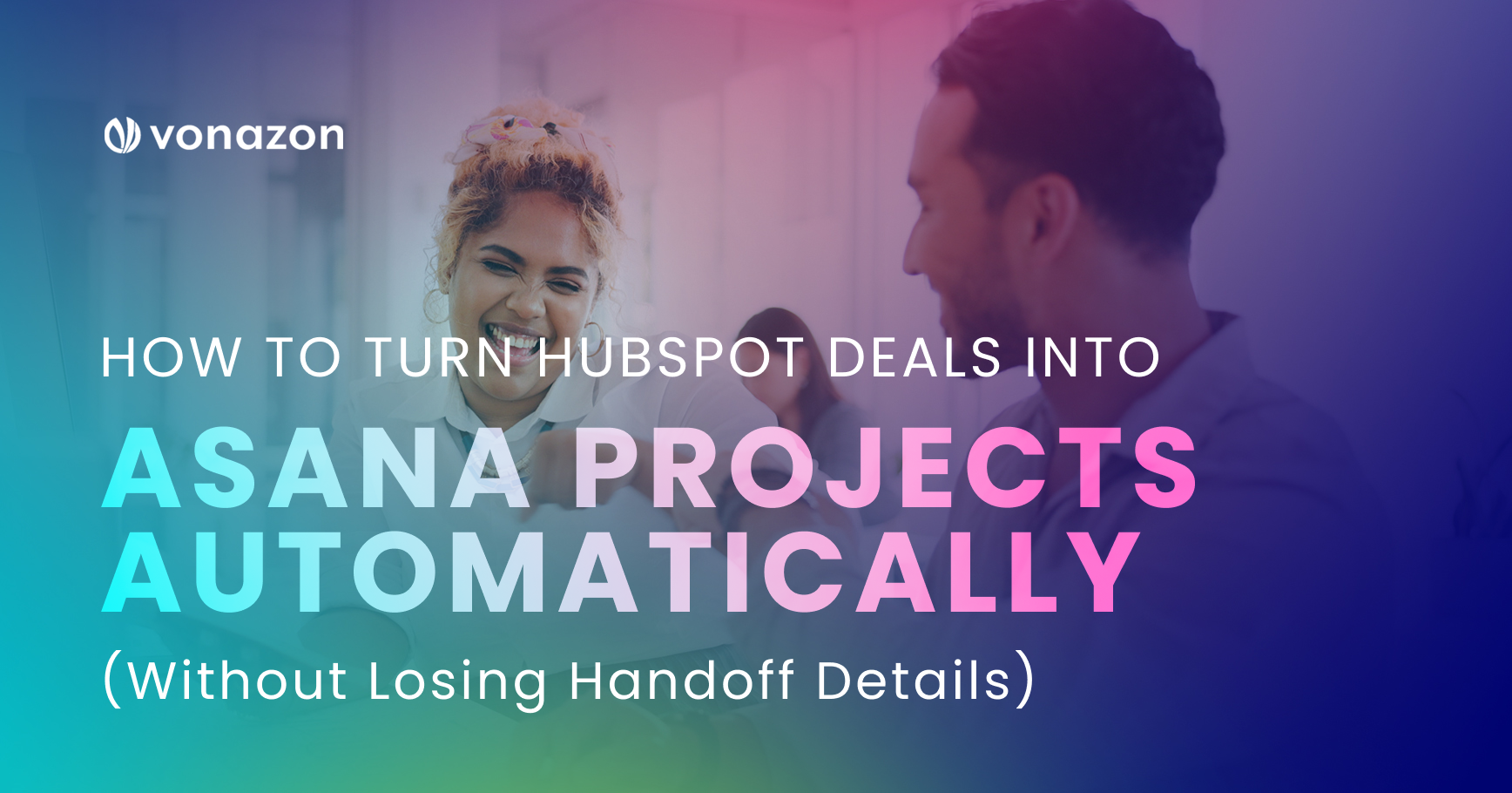5 Steps to Amplify Your Email Marketing with Newsletters that Drive Traffic
Email marketing is one of the best ways to educate, engage, and retain customers. Plus, it’s a proven way to drive sales—marketing emails have an astounding ROI of $42 per $1 spent.
However, it’s becoming harder and harder for businesses to connect to target audiences through standard email tactics alone. That’s where newsletters come in. Newsletters help strengthen customer relationships through regular, direct communication with subscribers. Audiences can stay up to date on topics like company news and industry trends while businesses garner high-quality leads—it’s a win-win!
In this blog, we’ll key you in on five of the most effective ways to introduce newsletters into your email marketing strategy so you can start racking up subscriptions, gaining leads, and boosting revenue.
Getting Started with Newsletter Marketing
Starting a newsletter can seem like a daunting process, but by following a few simple guidelines, your team will be publishing streamlined newsletters in no time. Here are a few things to keep in mind when you’re getting started:
- Decide what kind of content you want to publish. The content in your newsletter can take many forms, but you’ll need a consistent content strategy to ensure your newsletter is full of interesting, relevant information. Company blogs, product launches and updates, industry news, customer spotlights, and open positions are all great types of content to add to your newsletter—just make sure that your content adds value to your subscribers.
- Set your goal (s). Every newsletter marketing strategy should involve at least one goal. When setting your goals, ask yourself these questions:
- Why are we creating an email newsletter?
- What do we want to get out of it?
- How will we provide value to our readers?
- How much time, resources, and/or tools do we need?
- How will we promote it?
- How will we measure progress?
- Set a publishing schedule. Decide how often you want to publish your newsletter and at what time. Once a month is a good place to start, and as your newsletter gets more subscribers, you can increase the frequency or create different newsletters for various topics of interest.
- Select a delivery platform. Utilize a CRM or an email marketing automation platform to draft, design, and deliver scheduled emails to your specified contact list.
- Create a branded template. Use your email marketing platform to create a newsletter template. A template will allow you to quickly roll out scheduled newsletters following a consistent format.
- Prep and clean your list(s). Before you dive into your newsletter marketing strategy, make sure you clean and prep your contact lists. This includes checking for inconsistencies, deleting duplicate contacts, and standardizing rules. Learn more about cleaning your lists in our data hygiene
- Implement a sign-up form. Your audience won’t read your newsletter unless they opt-in. Create an optimized sign-up form that tells subscribers exactly what they will get for signing up and only include essential form fields—people tend to shy away from long forms.

To learn about critical marketing metrics you should be tracking in your campaigns, download our FREE guide, 6 Marketing Metrics Your Boss Cares About.
Step 1: Develop a Content Outline
No matter what kind of content you plan to include in your newsletter, make sure you have a consistent content outline that adheres to your publishing schedule.
If your newsletter will feature a new company blog each month, for example, make sure your content team is set to publish monthly blogs accordingly. Likewise, if you want your bi-monthly newsletter to include a customer highlight, make sure you leave yourself enough time to gain customer consent, ask questions, and gather all necessary information between publishing dates.
Whether featuring educational content like blogs and eBooks, repurposing social media content like short-form videos, or highlighting recent industry trends, stick to an outline and give yourself enough time to develop and review your newsletter content.
Step 2: Review Your Goals
When planning your newsletters, always think back to your initial marketing goals.
If your goal is to drive traffic to your website, make sure you have links and calls to action throughout your content. If you want to foster a sense of community, add links to your social media and share employee stories. If you’re looking to engage industry leaders or your top accounts, add value through educational content and expert insights.
Whatever your goals are, you’ll want to monitor critical email marketing KPIs like number of subscribers, open rate, click-through rate, unsubscribe rate, and bounce rate.
Step 3: Create Opt-In Bonuses
Whether you’re starting your newsletter from scratch or looking to generate subscriptions for an existing newsletter, creating an opt-in bonus is a great way to enhance the performance of your marketing emails.
An opt-in bonus is a reward that new subscribers get when they sign up for your newsletter—this can be a 10% store discount, access to premium content, or even free branded swag mailed directly to new members. Anything that can be considered valuable to your audience can be used as an opt-in bonus promotion.
Just remember to regularly clean your subscriber lists to ensure you’re not sending your newsletters to junk email accounts.
Step 4: Add Sign-up Forms to Your Website
Once you have your newsletter strategy nailed down and have a launch date in mind, it’s time to fill your website with sign-up forms.
Here are a few key places your sign-up form should live:
- At the end of long web pages, blogs, guides, or videos.
- In popups that trigger after a guest visits a certain page, spends an extended amount of time on your site, or makes a purchase.
- In a floating bar underneath your top menu.
- In the sidebar of your homepage.
- On your “resources” or “blog” page.
It’s important to present visitors with plenty of opportunities to sign up for your newsletter but avoid spamming prospects with sign-up forms. Try to strike a healthy balance and only add forms where they make sense.
Step 5: Develop at Least One Newsletter Landing Page
A landing page is a standalone web page designed to get visitors to complete a desired action. Marketing your newsletters on their own landing page is a fantastic way to direct visitors’ attention to your sign-up form.
Landing pages can range from very basic (a bit of copy and a form) to complex (various content blocks with social proof, testimonials, videos, or use cases), but the goal remains the same. Here are some best practices to keep in mind when creating a newsletter landing page:
- Make sure your call to action is at the top and bottom of the page and sprinkled throughout your content.
- Use visual cues, colors, and design to guide visitors through your page.
- Include high-quality images or videos.
- Double-check that all content adds value to the visitor and guides them to your desired action.
Putting Your Newsletter Marketing Strategy to Work
Now that you have some expert newsletter marketing tips and tricks in your toolbox, there’s only one thing left to do—start creating!
Remember that your newsletter is a work in progress and if you don’t nail it the first time, don’t stress. Continue to add content, adjust your lists, modify your subject lines, and re-strategize as needed to find what works.
If you’re looking to get started with a fully optimized marketing newsletter that draws in traffic and boosts brand loyalty, we’ve got you covered. Vonazon’s team of marketing specialists will work with you to create a strategy that fits your business needs, goals, and budget. Our team will ensure that your marketing newsletters are brilliantly written, beautifully designed, and implemented to perfection.
Leverage Automation Tools
In today’s highly competitive business world, it’s highly ineffective to manage your marketing manually. While it may sound ok on paper, in practice, manual processes are a massive drain on resources and leave too many chances for human error. With the right automation tools, your omnichannel marketing strategies can fuel their own success. Segment your audiences with a smarter level of precision for a fraction of the time, personalize your brand messaging, and schedule your marketing campaigns automatically.
Include A/B Testing
Unfortunately, you can’t rub a crystal ball to determine which marketing campaign will have the best results for your company. You can determine which direction works better for your business using the A/B testing approach to omnichannel marketing. These strategies operate by experimenting with different forms of content or formats and observing which of them work best for your brand. But understand that this isn’t a one-and-done process. With how fast consumer preferences change today, you’ll need to continuously keep integrating new ideas, gathering data, and then using those data points to adjust how you market the buyer’s journey to your customer segments.
Conclusion
The more detailed and specific your solutions can be when improving customer satisfaction, the easier you’ll find it is to boost ROI and brand visibility through multiple channels. Customers have always valued consistency and seamless, personalized experiences when buying into a brand. Interactions that make their loyalty and continued business feel worth their time and money. If consumers can’t get that targeted attention from one company, there are plenty of other online businesses they can buy from instead.
Why not make your company the first—and better—option for your target audience?
As experts in email marketing, we know how to craft attention-grabbing newsletters that get results.
Contact Vonazon today to start drafting your winning newsletter strategy.






